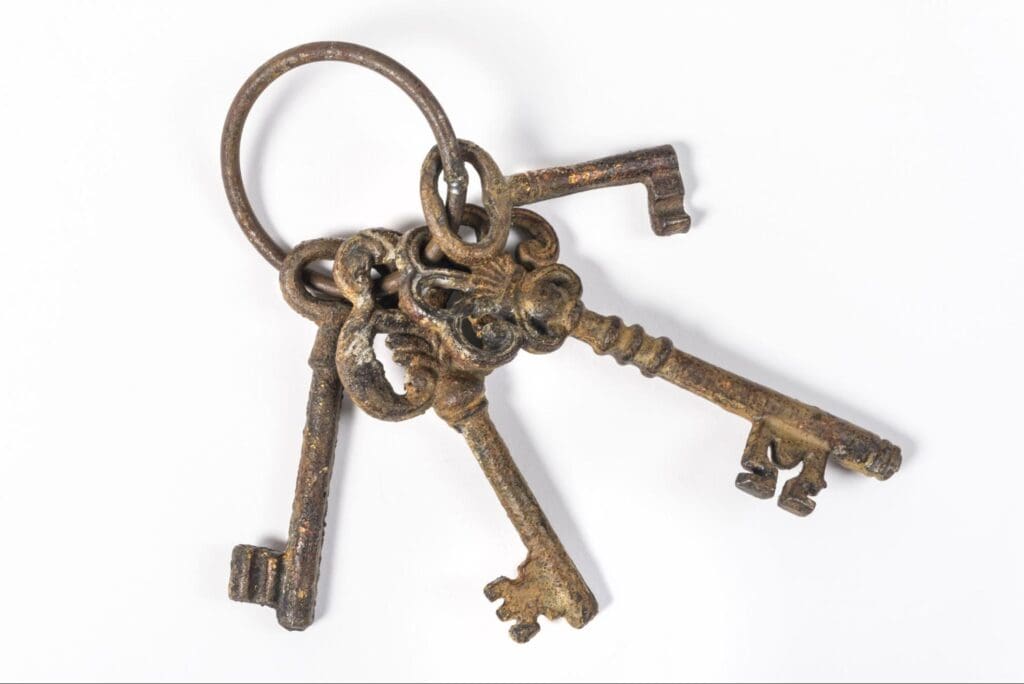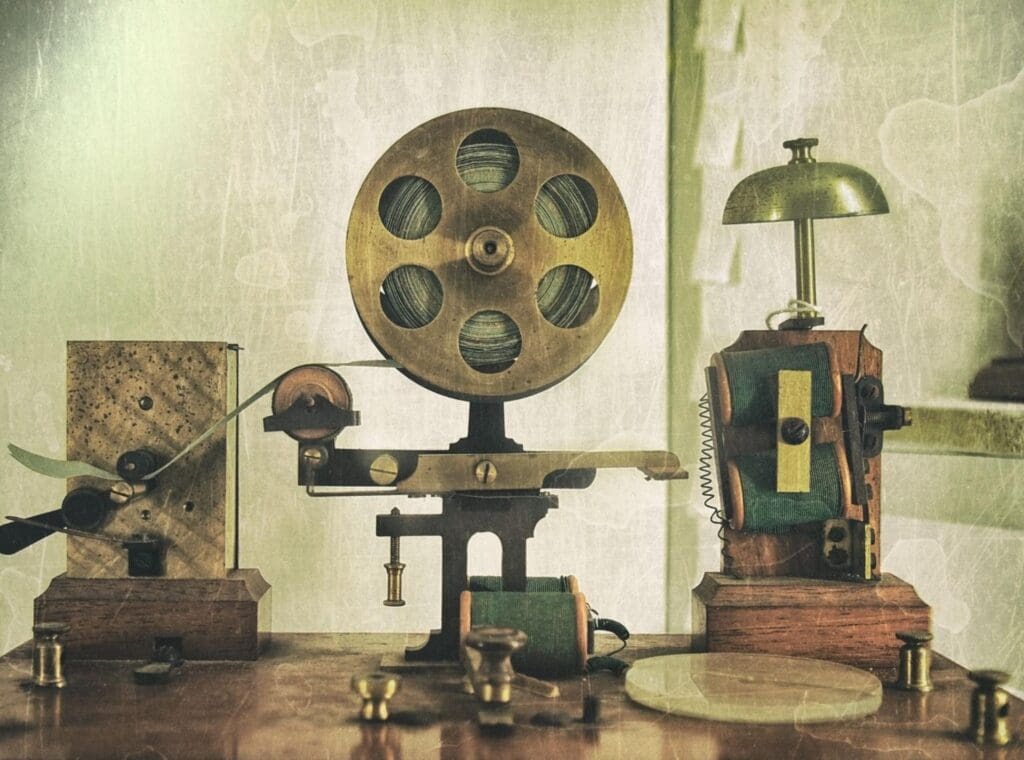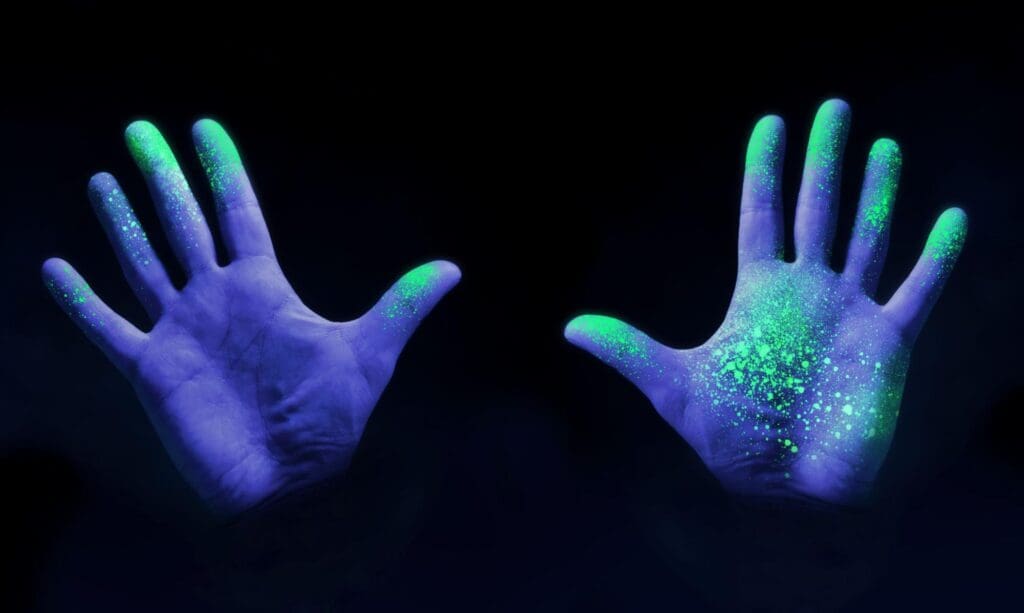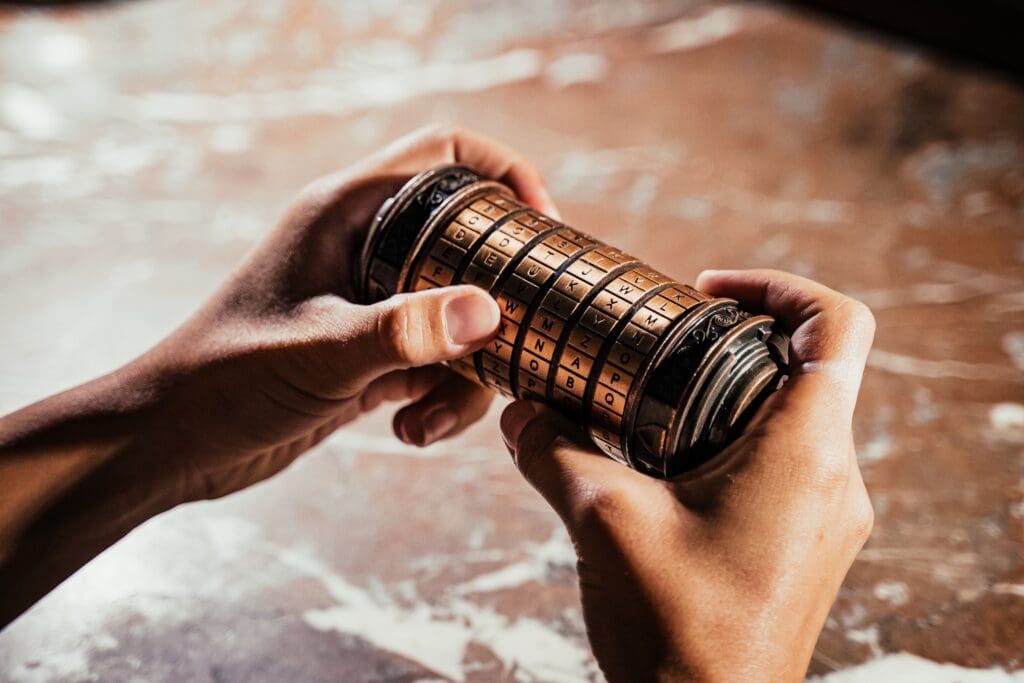Escape rooms aren’t about being locked behind a door and having to force yourself out. They’re designed to test your logic, creativity and critical thinking. This can be achieved in many ways, which is what keeps new escape rooms fresh and exciting, even for the escape room connoisseur.
So whether you’re trying to up your escape room game, or you’re new to the world of intellectual ‘escapism’, this blog will form the definitive guide to all the different types of escape room puzzles. We’ll cover the problem-solving skills, abilities and know-how you’ll need under your belt to fare much better and increase your chances of getting out in time.
After all, being able to spot where the puzzle is can be half the battle of trying to solve it!
The 25 Types of Escape Room Puzzles
The 25 types of escape room puzzles we’ll cover in this blog are:
- Keys!
- Secret Sounds
- Riddles
- Multimedia Clues
- Out Of Reach
- Magnets
- Common Knowledge Problem Solving
- Maths Puzzles
- Morse Code
- Decrypting Code
- Secret Messages
- Shadow & UV
- Jigsaws
- Hide & Seek
- Anagrams
- Unlocking Sequences
- Repeated Patterns & Motifs
- Newspaper Style
- Mirror, Mirror
- Combination Puzzles
- Mazes
- Ciphers
- A Clue Within A Clue
- Navigation Puzzles
- Hidden In Plain Sight

1. Keys!
Sometimes solving a clue seems too good (or too easy) to be true, and others it’s as simple as finding the right key to fit in a lock. You might find a key opens a door, a drawer, or a box to another clue and that they’re the only the beginning of your escape room challenges… but don’t rule out any keys you find in an escape room as a mere prop. In fact, they’re often integral to ‘unlocking’ the next part of the game.
2. Secret Sounds
Always keep your ears pricked in an escape room! These interactive puzzle games often incorporate recordings that may seem like ambient background noise. But listen carefully, especially if they’re being repeated, as they could be spelling out a code, or the location of a crucial part of information needed to progress your game.
3. Riddles
Riddles are word puzzles that challenge logic, and they’re a great example of team-building puzzles in escape rooms. A riddle you’re completely stumped on may be something someone else in your group can answer instantly. So make sure you share the load, read it aloud and see whether anyone can solve the complicated play on words, be it in the form of a pun, a rhyme, or something even more mysterious…
4. Multimedia Clues
A big part of interactive puzzle games such as escape rooms is creating an immersive experience for players. You might need to toggle some buttons to figure out how to turn on a broken-looking radio or screen, which will relay some vital advice or instructions. Just remember, puzzles are meant to be tricky, not impossible, so you won’t need to tamper with any of the objects in an escape room too much.
5. Out Of Reach
Sometimes, especially in prison-themed and extra scary escape rooms, you’ll have to get you and your teammates out of individual cells or hiding places before you can focus on getting out of the room altogether. You might have to use hooks, poles and other tools in your reach to lure a key, and have other players guide you.
6. Magnets
You might not be able to see what you’re trying to reach, or perhaps you can, but it’s blocked behind a wall of glass. This is where magnets come in, where you may need to prise a token down to a part of the room where you can grab it for yourself, or lead it through a maze and out to your hands. There might not be a designated magnet in the room, so think about other metal objects you have around that could work instead.

7. Common Knowledge Problem Solving
You’re not expected to have any kind of specific practice or prior insight before entering an escape room, but it can be assumed that at least someone in your group will be able to use common knowledge outside of the game to solve a puzzle within it. It could be the seven deadly sins, the twelve star signs, the line up in a pack of cards, or other similarly structured formula.
8. Maths Puzzles
Typical maths questions are also great grounds for team-building puzzles. Not everyone in your group needs to be a numbers whizz, but those who follow most closely in Einstein’s footsteps will likely need to step up when it’s time to do a bit of light number crunching. And no cheating – no calculators!
9. Morse Code
Ever seen morse code? That series of dots and dashes used by sailors, hikers and other isolated people in the times before smartphones to carry messages along large distances? Nowadays, you’re more likely to encounter them in escape rooms – but don’t worry, there’ll be a morse code script somewhere in the room if you come across a morse message to translate or send.

10. Decrypting Code
On the other hand, sometimes you might need to decode something that’s been entirely invented just for the game. However, it follows the same principle, and you’ll need to look around the room to find the code ‘dictionary’ that allows you to reveal the message hidden within.
11. Secret Messages
In escape rooms, hidden messages are everywhere,
and posters, poems and props aren’t always all they seem. When looking at texts, scan for capitalised letters in the middle of words, acrostic formats (words formed from the first letter of each line) and highlighted letters or words in longer passages to uncover their true meaning.
12. Shadow & UV
Blacklight and UV lighting may conjure up memories of childhood spy games; but they’re just as fun in escape rooms for families (and adults!) too. Pens, flashlights or other UV and blacklight devices can shine secret messages, codes and clues in a dark space, and they’re a vital part of many escape room puzzles that can all too easily go unseen.

13. Jigsaws
Nothing beats an old-fashioned, classic escape room puzzle right? We’re talking about the kind with jagged edges. And whilst your jigsaw may (or may not) look like the kind you’d find in a box, these can sometimes be the most straightforward – and satisfying – to solve early on in the game.
14. Hide & Seek
It would be too easy if we put all the clues on the table, right? An important part of escape game mechanics is creating a dynamic experience that encourages some physical movement and exploration of the space, rather than purely playing mind-games. So get curious! Shake those books, open those drawers and explore the nooks and crannies to see if they reveal any important clues, keys or facts.
15. Anagrams
As we touched on earlier, if something doesn’t make sense at first glance, that doesn’t mean it’s not important. It’s often a specially designed escape room challenge to test your critical thinking! Anagrams can help you unlock knowledge of the location of keys, scrolls and other pieces of information, so if a code you’ve found doesn’t make sense at first, try re-arranging it.
16. Unlocking Sequences
Similarly to above, another of our top escape room design tips is that it’s not always what you’re doing, but how you’re doing it. You might have all the right numbers but you’re entering them in the wrong order, or perhaps you and your team need to work together to make things happen at once. If you’re certain you’ve solved a clue but it’s ‘not working’, switch up the sequence.
17. Repeated Patterns & Motifs
Apart from say, a fire escape, almost every element in an escape room is there by meticulous design. So if you see the same picture, person, name or pattern, it’s likely not there by mistake, and could be the answer to a riddle or other escape room puzzle. This is an easier style of challenge for younger children to solve, making it popular in kid-friendly escape rooms.

18. Newspaper Style
We know you’re not expecting to walk into a 3D version of the games section in a newspaper. But, another of our escape room design tips is to harness the potential of these common quiz games, because they may help you solve a larger clue. So brush up on your wordsearch, crossword and sudoku skills before you enter an escape room in Melbourne!
19. Mirror, Mirror
Another of our top escape room design tips is to be on the lookout for mirrors. They may be hung on the wall, in a vanity drawer, or tucked away like a secret possession. But when words or pictures appear scrambled, holding them up to a mirror can switch them back around and reveal the true meaning.

20. Combination Puzzles
Most of the time, a key, combination lock or similar ‘single-use’ code or clue will only be used to solve one problem or get over one hurdle. However, you might need to look at the bigger picture, especially if you’re moving from one room to another, and conjure up something you already solved earlier to progress forwards.
21. Mazes
You’ll be a-mazed at how many times a simple maze can have people trapped in a room and stuck going in circles. It’s unlikely that you’ll be in the maze yourself, but perhaps you’ll have to direct someone’s hands who can’t see, or use some other form of teamwork to tease out whatever you need that’s trapped in a labyrinth box.
22. Ciphers
Ever seen a cipher? It’s the original form of encryption: a form of written code or communication that hides a word or meaning within two rotating spheres. Turn them around each other, a bit like you would with a combination lock, and you’ll be able to unlock the one option that reveals the hidden message or number.
23. A Clue Within A Clue
For the really sneaky game masters (like those within our Melbourne team), doubling up on the mystery is part and parcel of escape game mechanics. You might find paintings with obscured details, words in sentences that don’t make sense, or numbers in a jigsaw for a puzzle you’re solving for something else. Keep these in mind when you spot them… they might become relevant later on in the game.
24. Navigation Puzzles
Occasionally, such as in sea-themed or desert island escape rooms, you’ll have to brush up on your geography skills and use a compass, or read lines of latitude and longitude from a map. However, in more modern escape rooms, you might be more likely to find a GPS-related puzzle for an updated take on compass navigation.
25. Hidden In Plain Sight
How could we write an escape room challenges blog without mentioning the most classic method of concealing something: hiding. You might need to look for objects, words or pictures hidden within other pictures, tucked behind bookshelves, or stored away in circus chests… It all depends on the theme of the room you’re trying to escape from. But get your glasses out and sharpen your eyes!
****
There are all kinds of escape room puzzles to explore, which is an important part of why each room is so different from the next. Whether you want to experience the oldest escape room in Australia, or try something really, really hard with our new 5/5 star difficulty room, ‘Fractured’, you’ll no doubt find a scattering of these puzzles in each. But we won’t tell you any more than that!
Get in touch today to plan your escape room experience, or book now to get the slot you want for the game you’ve got your eye on. After you’ve read this blog, your friends, family or colleagues will be wondering how you became such an overnight escape room detective!
Looking for more escape room related tips and advice? Check out these other guides below:
- Escape Room Tips For Beginners (2024): The Ultimate Guide To Record-Breaking Escapes
- The Best Online Escape Rooms in 2024
- Escape Room Rules & Etiquette: Dos and Don’ts for a Successful Experience
- Top 5 Most Difficult Escape Rooms in the World
“`



